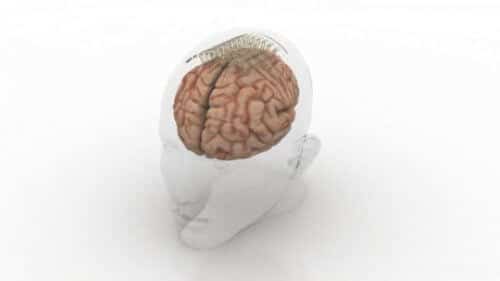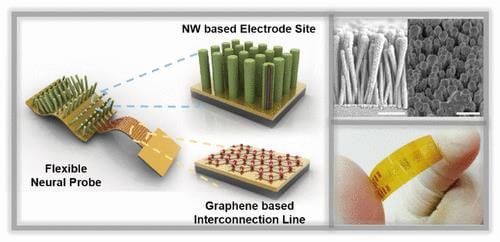Scientists have succeeded in developing more flexible brain electrodes that reduce tissue damage while receiving clear signals from the brain

[Translation by Dr. Nachmani Moshe]
Electrodes inserted into the brain record and measure the neural activity within it, and can help treat neurological diseases such as Parkinson's disease and epilepsy. Growing research interest is also focused on the development of more efficient brain-machine interfaces, in which the electrodes can control prosthetic limbs. Progress in these areas is delayed due to limitations in terms of the electrodes, which are too rigid and may cause damage to the brain tissues.
The development of smaller and finer electrodes that are still able to measure the signals received from the brain is a challenge in light of the fact that brain signals are extremely weak. Normally, the smaller the electrode, the harder it is for it to locate the signal in the brain. At the same time, a team of researchers from Korea managed to develop detectors that are tiny and flexible, capable of measuring brain signals.

The new detector consists of an electrode that measures the signals from the brain. The signal itself passes through a common connection type channel to the connector, which converts the signal to the devices that measure and analyze the signals. The electrode is based on a substrate of a thin gold layer. Zinc oxide nanowires are attached to this layer, which are themselves coated with a thin layer of gold, and additionally with a layer of an electrically conductive polymer called PEDOT. The combination of these materials increases the effective surface area of the detector, the electrical conductivity and the strength of the electrode, while still maintaining flexibility and compatibility with soft tissues. The use of tiny nanowires allows researchers to design a smaller electrode that maintains the same effective surface area as a larger, flat electrode. That is, the electrode can be made smaller without reducing the measuring capacity of the signal. The joint itself is made of a mixture of graphene and gold. Graphene is a flexible material and the gold functions as an excellent conductor. The researchers tested their new detector and found that a rat's brain signals were measured clearly, much better than a standard flat gold electrode.
"Our array of electrodes based on graphene and nanowires can be very useful in the areas of monitoring and measuring the functions of the nervous system, or in the transmission of electrical signals to the brain," explained the researchers in their article published a long time ago in the scientific journal ACS Applied Materials and Interfaces. The detector is required for additional clinical trials in order to distribute it on a commercial level. The researchers are also interested in developing a wireless version that will make the device convenient for use in a variety of applications.
